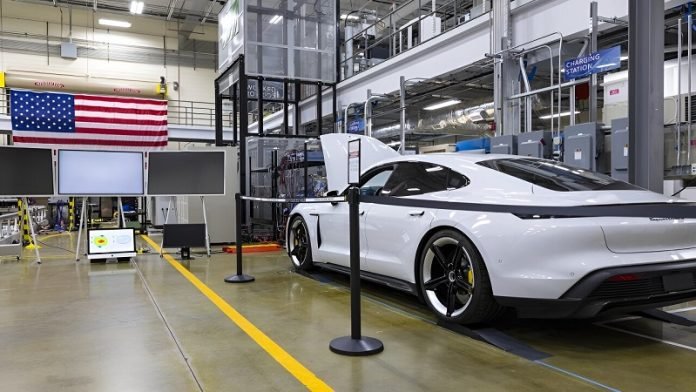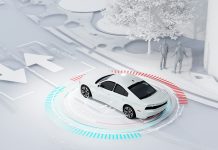
Researchers at the Department of Energy’s Oak Ridge National Laboratory (ORNL) have achieved a significant milestone by demonstrating a 270-kilowatt (kW) wireless power transfer to a light-duty electric vehicle.
This demonstration, conducted using a Porsche Taycan in collaboration with Volkswagen Group of America, showcases ORNL’s innovative polyphase wireless charging system.
This achievement is a major step forward from ORNL’s recent 100-kW wireless charging demonstration and represents a significant breakthrough in the quest for fast wireless charging solutions.
“In the past three months, the ORNL vehicle power electronics and electric drives research teams have set impressive world records for wireless charging,” said Lee Slezak, technology manager for grid and charging infrastructures at the DOE’s Vehicle Technologies Office.
“These achievements will further speed up the adoption of electric vehicles in the U.S.”
One of the challenges with wireless charging for light-duty passenger vehicles like the Porsche Taycan is that traditional large and heavy wireless power transfer systems are difficult to integrate due to space, weight, and volume constraints.
Currently, existing wireless charging systems for light-duty vehicles are being developed to handle up to 11-kW power levels with about 92% efficiency. Industry standards currently cover up to 20-kW power levels.
The ORNL-developed system that powered the Porsche Taycan uses lightweight polyphase electromagnetic coupling coils.
These coils, which have a diameter just over 19 inches, allow for higher power density in a compact size. The process is similar to the wireless charging of small consumer devices, but the unique design of the polyphase coils enables the transfer of extremely high power levels.
The system uses rotating magnetic fields generated by the coil phase windings to enhance power transfer. The charging system was seamlessly integrated into the vehicle’s undercarriage.
This advanced wireless power transfer technology includes safety features to prevent issues such as exceeding voltage and current limits, overheating, and short-circuiting.
The system can also initiate shutdown procedures if there are power interruptions or other unexpected conditions that could affect safe power transfer.
“The receiver coil designed for the Porsche Taycan research vehicle can achieve 8 to 10 times higher power density compared to existing systems,” said Omer Onar, leader of ORNL’s Vehicle Power Electronics group and lead researcher on the Porsche demonstration.
“Per kilowatt weight, this is also the most lightweight charging system in the world.”
Power density is a crucial factor in wireless charging because it indicates how much power the system can handle relative to its size. Higher densities from smaller, more compact systems improve overall efficiency and performance.
ORNL’s system can achieve a 50% increase in the state of charge within just 10 minutes, with more than 95% efficiency. The power transfer was conducted over a 4.75-inch gap between the ground and the coil mounted to the underside of the vehicle.
The 270-kW demonstration marks the successful completion of a project that ORNL and Volkswagen announced in 2021. ORNL’s research team leveraged Volkswagen’s expertise in vehicle integration to test this new wireless charging concept on an electric vehicle.
The goal was to develop the highest-power density wireless charging system by focusing on a design that uses rotating electromagnetic fields.
These fields increase efficiency by reducing voltage and eliminating electric current ripples and field cancellations between the coil phase windings.
This groundbreaking achievement in wireless charging technology promises to make electric vehicle charging faster, more efficient, and more convenient, potentially accelerating the adoption of electric vehicles worldwide.
Source: Oak Ridge National Laboratory.



